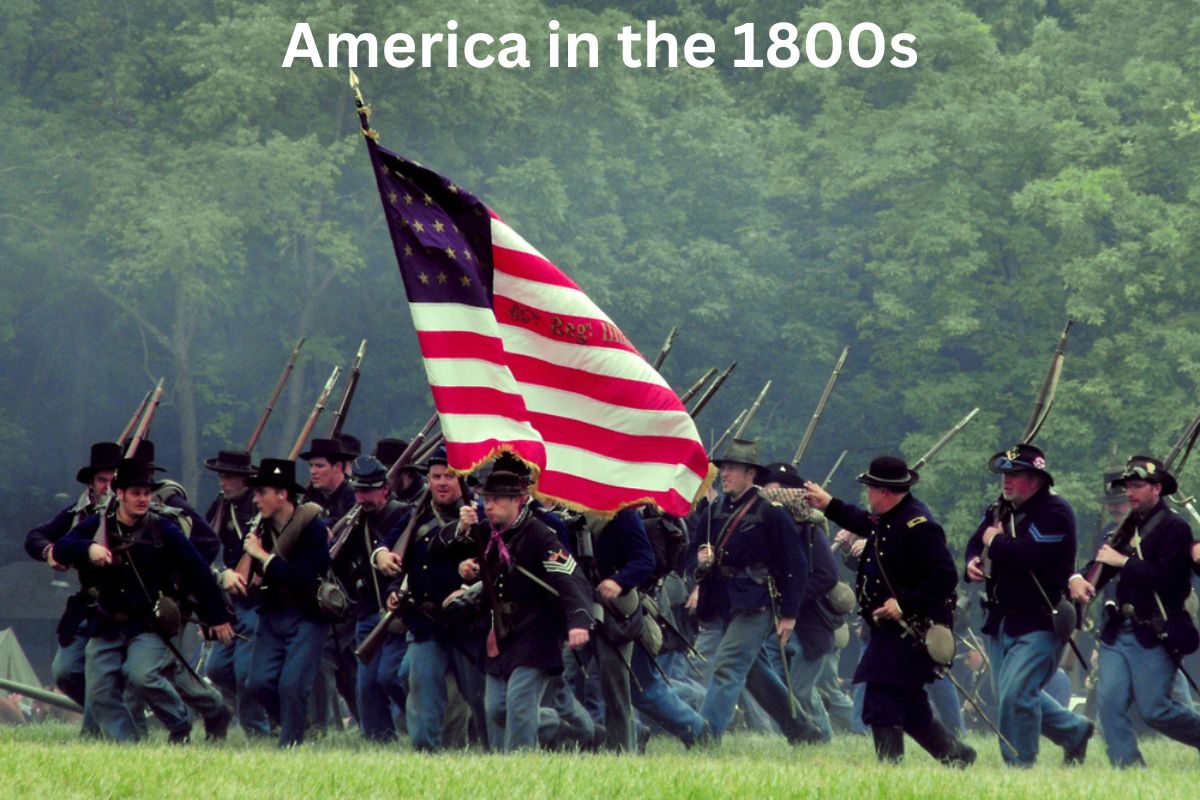The 1800s in America, also known as the 19th century, was a period of significant growth and transformation in American history.
This century saw major changes in the country’s politics, society, and economy, as well as the emergence of new cultural trends and social movements.
The 1800s was a time of westward expansion, industrialization, and immigration, as well as the rise of abolitionism, women’s rights, and other important social movements.
This period of American history is characterized by both progress and conflict, and its legacy continues to shape the country to this day.
America in the 1800s
Louisiana Purchase (1803)
The Louisiana Purchase of 1803 was a land acquisition that doubled the size of the United States, involving the purchase of approximately 827,000 square miles of land from France for $15 million.
The territory included the present-day states of Louisiana, Arkansas, Missouri, Iowa, North Dakota, South Dakota, Nebraska, Oklahoma, Kansas, and parts of Montana, Wyoming, Colorado, and Minnesota.
This significant event in American history gave the country control over a vast amount of land, which provided new opportunities for westward expansion, trade, and agriculture, and helped to establish the United States as a major world power.
Lewis and Clark Expedition (1804-1806)
The Lewis and Clark Expedition, also known as the Corps of Discovery, was a two-year exploration of the newly acquired Louisiana Territory and the Pacific Northwest region of North America, commissioned by President Thomas Jefferson in 1803.
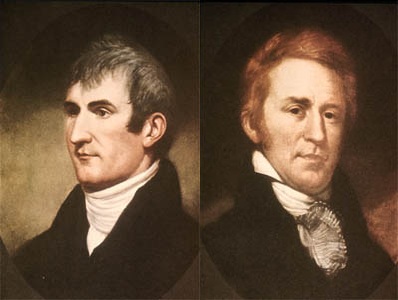
Led by Meriwether Lewis and William Clark, the mission was to explore the western lands, establish relationships with Native American tribes, and to find a water route to the Pacific Ocean.
The expedition began in May 1804, and the explorers traveled up the Missouri River, through the Great Plains, and into the Rocky Mountains. They successfully navigated the western terrain, established relationships with many Native American tribes, and reached the Pacific Ocean in November 1805.
Marbury v. Madison Supreme Court decision (1803)
Marbury v. Madison was a landmark Supreme Court decision in 1803 that established the principle of judicial review in the United States.
The case involved a dispute between William Marbury, who had been appointed as a justice of the peace by President John Adams, and Secretary of State James Madison, who had refused to deliver Marbury’s commission.
Chief Justice John Marshall, in his opinion for the Court, held that while Marbury had a legal right to his commission, the Supreme Court did not have the jurisdiction to issue the writ of mandamus that Marbury had requested.
Marshall declared that the Judiciary Act of 1789, which gave the Supreme Court the authority to issue such writs, was unconstitutional because it conflicted with the Constitution’s grant of judicial power to the Supreme Court in Article III.
By striking down a federal law as unconstitutional, the Marbury v. Madison decision established the principle of judicial review, which gives the Supreme Court the power to declare laws passed by Congress and actions taken by the President to be unconstitutional.
This decision established the Supreme Court as the final authority on constitutional interpretation and helped to establish the balance of power among the three branches of government.
War of 1812 (1812-1815)
The War of 1812 was a military conflict between the United States and Great Britain that lasted from 1812 to 1815.
Also Read: Historic Wars of the 1800s
The war was primarily fought over British interference with American trade and maritime rights, as well as British support of Native American resistance to American expansion into the Northwest Territory.

The war began with a declaration of war by the United States on June 18, 1812, and involved a series of military campaigns and battles on land and sea.
The war saw several notable victories for the United States, including the naval victories of the USS Constitution and the Battle of New Orleans, which occurred after the war had officially ended.
Also Read: War of 1812 Facts
The Treaty of Ghent, signed on December 24, 1814, ended the war and restored the pre-war borders between the United States and British North America. The treaty did not address the issues that had led to the war, but it did establish a framework for the peaceful resolution of future disputes.
Hartford Convention (1814-1815)
The Hartford Convention was a meeting of delegates from several New England states that took place from December 15, 1814, to January 5, 1815, during the War of 1812. The convention was held in Hartford, Connecticut, and was called in response to growing discontent with the federal government’s handling of the war.
The delegates at the convention were primarily Federalists, who were opposed to the war and believed that it was harming their economic interests.
The convention considered several constitutional amendments to limit the power of the federal government, including limiting presidential power, restricting the use of military conscription, and requiring a two-thirds majority in Congress to declare war.
However, before the convention could issue a final report, news arrived that the war had ended with the signing of the Treaty of Ghent on December 24, 1814. The news undermined the legitimacy of the convention’s proceedings and made their demands seem unnecessary and unpatriotic.
Missouri Compromise (1820)
The Missouri Compromise of 1820 was a landmark piece of legislation that helped to ease tensions between the North and South over the issue of slavery.
The compromise was the result of a dispute over the admission of Missouri as a slave state and Maine as a free state, which threatened to upset the balance of power in Congress between free and slave states.
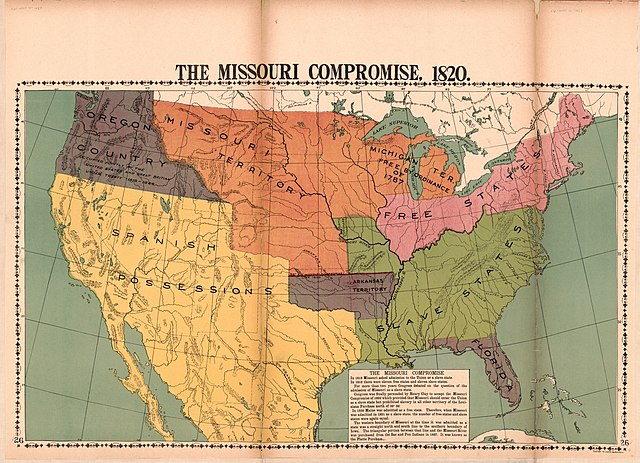
The compromise, proposed by Speaker of the House Henry Clay, involved several key provisions. First, it admitted Missouri as a slave state and Maine as a free state, maintaining the balance of power in the Senate between free and slave states.
Second, it established the 36°30′ parallel as the boundary between free and slave territories in the western United States, with slavery prohibited north of the line and allowed south of the line.
The Missouri Compromise was seen as a temporary solution to the issue of slavery, but it helped to ease tensions between the North and South for several decades.
However, the compromise was ultimately challenged by the Kansas-Nebraska Act of 1854, which repealed the ban on slavery north of the 36°30′ parallel and led to further tensions between the North and South over the issue of slavery.
Monroe Doctrine (1823)
The Monroe Doctrine was a policy statement made by President James Monroe in 1823, which established the United States’ position on foreign intervention in the affairs of the Western Hemisphere.
The doctrine declared that the United States would consider any attempt by European nations to interfere in the affairs of the Americas as a threat to the national security and sovereignty of the United States.
The Monroe Doctrine was significant for several reasons. First, it established the United States as a dominant power in the Western Hemisphere and asserted the country’s leadership role in the region.
Second, it served as a warning to European powers to refrain from further colonization or interference in the affairs of the Americas. Third, it laid the groundwork for future American foreign policy in the region and helped to establish the United States as a major world power.
Erie Canal completed (1825)
The Erie Canal was a canal system that connected the Great Lakes to the Hudson River and the Atlantic Ocean, completed in 1825. It was a major engineering feat of its time, stretching 363 miles from Albany to Buffalo, New York, and transforming transportation and commerce in the region.
The construction of the Erie Canal was a significant event in American history, providing a vital link between the agricultural regions of the Midwest and the eastern cities, and helping to spur economic growth and westward expansion.
The canal allowed for the transportation of goods, including grain, lumber, and other commodities, at a lower cost than by land, which made transportation and commerce more efficient and profitable.
Indian Removal Act (1830)
The Indian Removal Act of 1830 was a federal law signed by President Andrew Jackson that authorized the forced relocation of Native American tribes from their ancestral lands in the southeastern United States to Indian Territory in present-day Oklahoma.
The act was driven by a desire for westward expansion, as well as a belief that Native American cultures and communities were incompatible with American society.
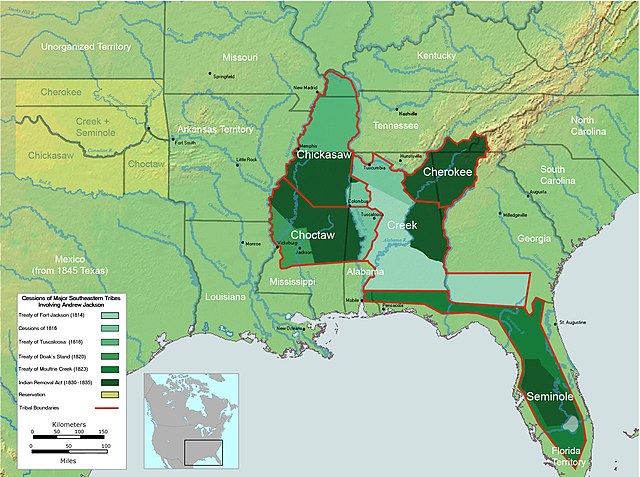
The Indian Removal Act was a controversial and deeply divisive policy, which led to the forced relocation of tens of thousands of Native Americans and the deaths of thousands more.
The removal process was often brutal and inhumane, with many Native Americans dying of starvation, disease, and exposure during the journey to Indian Territory, which became known as the Trail of Tears.
Nat Turner’s Rebellion (1831)
Nat Turner’s Rebellion was a slave revolt that took place in Southampton County, Virginia, in August 1831. The rebellion was led by Nat Turner, an enslaved African American who believed he was called by God to lead a rebellion against slavery.
The rebellion resulted in the deaths of approximately 60 white people, and it was one of the largest and deadliest slave uprisings in American history.
Nat Turner’s Rebellion had significant and long-lasting effects on American history and the institution of slavery. It led to a widespread panic among white slaveholders and resulted in increased repression of enslaved people in the South. It also contributed to the growing abolitionist movement in the North, which sought to end slavery and promote racial equality.
Black Hawk War (1832)
The Black Hawk War was a conflict between the United States and several Native American tribes, led by the Sauk leader Black Hawk, that took place in the Midwest in 1832. The war was sparked by disputes over Native American lands in Illinois and Wisconsin, which were being rapidly settled by white settlers.
Black Hawk and his followers, who had been forced to cede their lands in Illinois in a previous treaty, crossed the Mississippi River into Illinois in an attempt to reclaim their ancestral lands. The U.S. military, led by General Henry Atkinson, responded by mobilizing a large force of soldiers and militia to suppress the rebellion.
The Black Hawk War lasted for several months and was marked by a series of bloody skirmishes and battles. The conflict ended with the surrender of Black Hawk and his followers, and the forced removal of the Sauk and Fox tribes from their ancestral lands.
Texas Revolution (1835-1836)
The Texas Revolution was a military conflict between the Republic of Mexico and the Republic of Texas, which took place from 1835 to 1836.
The conflict began in October 1835, when Texan colonists, led by Stephen F. Austin, rebelled against the Mexican government, which had recently abolished slavery and was seeking to establish greater control over the region.
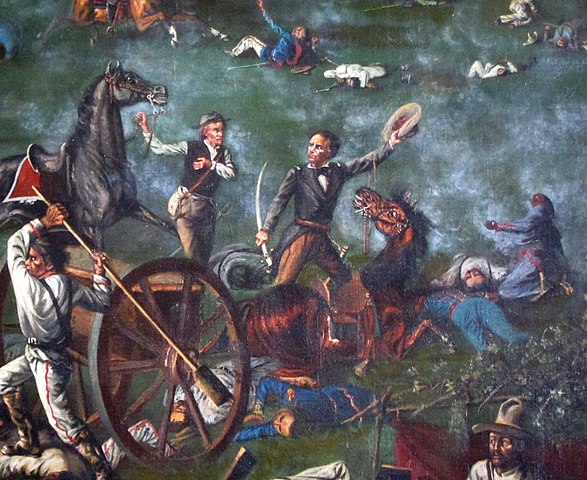
The Texas Revolution was marked by several significant battles, including the Battle of Gonzales, the Battle of the Alamo, and the Battle of San Jacinto, where the Texan forces, led by General Sam Houston, defeated the Mexican army and secured Texan independence.
The Texas Revolution had significant and long-lasting impacts on American history and the issue of slavery. It established the Republic of Texas as an independent country, which was eventually annexed by the United States in 1845, and helped to solidify the idea of Manifest Destiny, the belief that it was the United States’ destiny to expand westward to the Pacific Ocean.
The Alamo (1836)
The Alamo was a mission and fortress located in San Antonio, Texas, which was the site of a pivotal battle during the Texas Revolution in 1836.
The battle took place from February 23 to March 6, 1836, and pitted a small group of Texan rebels, led by William Barret Travis, James Bowie, and Davy Crockett, against a much larger force of Mexican troops, led by General Antonio López de Santa Anna.
The Texans, who had been besieged in the Alamo for nearly two weeks, were ultimately overwhelmed by the Mexican army, and all of the defenders were killed. The Battle of the Alamo became a symbol of Texan courage and resilience, and helped to inspire other Texans to join the fight for independence.
Trail of Tears (1838)
The Trail of Tears was a forced relocation of Native American tribes from their ancestral lands in the southeastern United States to Indian Territory in present-day Oklahoma in 1838.
The relocation was authorized by the Indian Removal Act of 1830, which aimed to remove Native Americans from lands east of the Mississippi River to make way for white settlers.
The Trail of Tears involved the forced removal of tens of thousands of Native Americans, including members of the Cherokee, Creek, Seminole, Chickasaw, and Choctaw tribes. The journey was arduous and deadly, with many Native Americans dying of starvation, disease, and exposure during the journey.
The Trail of Tears had significant and long-lasting impacts on Native American communities and the history of the United States. It led to the loss of Native American lands, cultures, and communities, and it contributed to the growing sense of American nationalism and identity.
Mexican-American War (1846-1848)
The Mexican-American War was a conflict between the United States and Mexico that took place from 1846 to 1848. The war was sparked by a dispute over the annexation of Texas, which had declared its independence from Mexico in 1836 and was later annexed by the United States in 1845.
The war was marked by several significant battles, including the Battle of Palo Alto, the Battle of Buena Vista, and the Battle of Chapultepec.
The United States, led by General Winfield Scott, was ultimately victorious, and Mexico was forced to cede a significant portion of its territory to the United States, including what is now California, Nevada, Utah, Arizona, New Mexico, and parts of Colorado, Wyoming, Kansas, and Oklahoma.
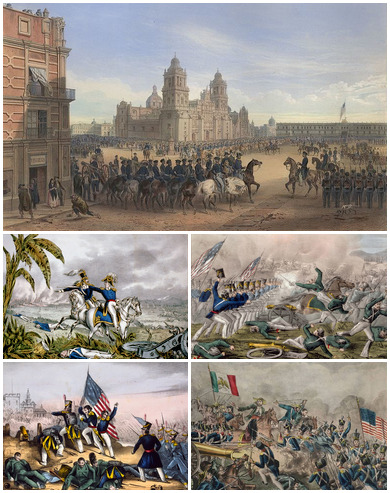
The Mexican-American War had significant and long-lasting impacts on American history and the issue of slavery.
It helped to solidify the idea of Manifest Destiny, the belief that it was the United States’ destiny to expand westward to the Pacific Ocean, and it contributed to the growing tensions between the North and South over the issue of slavery, as the newly acquired territories brought the question of whether to allow slavery in those areas to the forefront of national politics.
Seneca Falls Convention (1848)
The Seneca Falls Convention was a women’s rights convention held in Seneca Falls, New York, in 1848. The convention was organized by a group of women’s rights activists, led by Elizabeth Cady Stanton and Lucretia Mott, and it was attended by over 300 people.
The Seneca Falls Convention was significant for several reasons. It was the first women’s rights convention in the United States, and it helped to launch the women’s suffrage movement.
The convention also produced the “Declaration of Sentiments,” a document modeled after the Declaration of Independence, which called for greater rights and opportunities for women, including the right to vote.
California Gold Rush (1848-1855)
The California Gold Rush was a significant event in American history that began in 1848, when gold was discovered in California. The discovery of gold sparked a rush of prospectors and miners to California from around the world, who hoped to strike it rich and find their fortune.
Also Read: Timeline of the California Gold Rush
The California Gold Rush had significant economic, social, and cultural impacts on American history. The influx of miners and prospectors helped to transform California’s economy, and it contributed to the growth of San Francisco as a major commercial center.
The Gold Rush also had important social and cultural implications, as it led to the displacement and exploitation of Native Americans and contributed to the spread of racial discrimination and inequality.
Compromise of 1850 (1850)
The Compromise of 1850 was a series of legislative measures that were enacted by the United States Congress in an attempt to resolve the dispute over the issue of slavery and its expansion into newly acquired territories in the aftermath of the Mexican-American War.
The Compromise of 1850 included several key provisions, including the admission of California as a free state, the establishment of the territories of New Mexico and Utah, which would determine the question of slavery through popular sovereignty, and the abolition of the slave trade (but not slavery itself) in the District of Columbia.
Fugitive Slave Act (1850)
The Fugitive Slave Act of 1850 was a law passed by the United States Congress as part of the Compromise of 1850.
The law required that all escaped slaves be returned to their owners, regardless of whether they had reached free states or territories. It also imposed heavy fines and imprisonment on anyone who aided or abetted a fugitive slave, and it required citizens to assist in the capture and return of runaway slaves.
The Fugitive Slave Act of 1850 had significant and long-lasting impacts on American history and the issue of slavery. It was deeply controversial, and it was widely opposed by abolitionists and other advocates of freedom and equality.
The law was seen as a violation of basic human rights, and it helped to fuel the growing tensions between the North and South over the issue of slavery.
Uncle Tom’s Cabin published (1852)
Uncle Tom’s Cabin is a novel written by American author Harriet Beecher Stowe and published in 1852. The novel is a fictional account of the lives of African American slaves and their experiences under slavery in the antebellum South.
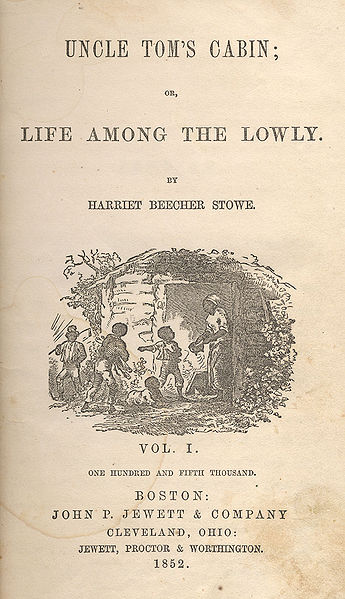
Uncle Tom’s Cabin was significant for several reasons. It helped to galvanize opposition to slavery in the United States, and it contributed to the growing abolitionist movement.
The novel also had important social and cultural implications, as it challenged traditional gender roles and helped to establish the idea of women’s equality as a central part of American democracy.
Kansas-Nebraska Act (1854)
The Kansas-Nebraska Act was a law passed by the United States Congress in 1854, which established the territories of Kansas and Nebraska and allowed settlers in those territories to determine whether or not to allow slavery through popular sovereignty.
The law effectively repealed the Missouri Compromise of 1820, which had prohibited slavery in the territories north of the 36°30′ parallel.
The Kansas-Nebraska Act had significant and long-lasting impacts on American history and the issue of slavery. It was deeply controversial and helped to intensify the growing tensions between the North and South over the issue of slavery.
The Act was seen as a betrayal of the principles of freedom and justice that the United States was founded upon, and it contributed to the outbreak of violence in Kansas, where pro-slavery and anti-slavery forces clashed in a series of confrontations known as “Bleeding Kansas.”
Dred Scott Decision (1857)
The Dred Scott decision was a landmark ruling by the United States Supreme Court in 1857 that held that African Americans, whether free or enslaved, could not be considered citizens of the United States and therefore had no legal right to sue in federal court.
The decision arose out of the case of Dred Scott, a slave who had sued for his freedom on the grounds that he had lived in free states and territories.
First Transatlantic Telegraph cable (1858)
The first transatlantic telegraph cable was laid in 1858, connecting Europe and North America by telegraph for the first time. The cable was laid between Ireland and Newfoundland, and it enabled near-instantaneous communication between the two continents.
The transatlantic telegraph cable was significant for several reasons. It helped to revolutionize communication and commerce between Europe and North America, and it facilitated the growth of global trade and industry.
The cable also had important social and cultural implications, as it helped to connect people across vast distances and contributed to the development of a global community.
John Brown’s Raid on Harpers Ferry (1859)
John Brown’s Raid on Harpers Ferry was an event that occurred in 1859, when abolitionist John Brown and a group of his followers attempted to seize the federal armory in Harpers Ferry, Virginia, with the goal of arming slaves and starting a rebellion against slavery.
The raid was significant for several reasons. It helped to galvanize opposition to slavery in the United States, and it contributed to the growing abolitionist movement.
The raid also had important social and cultural implications, as it challenged traditional gender and racial roles and helped to establish the idea of freedom and equality as central to American democracy.
Civil War (1861-1865)
The Civil War was a major conflict that took place in the United States from 1861 to 1865. The war was fought between the Union (the northern states) and the Confederacy (the southern states) over the issue of slavery and states’ rights.
The Civil War had significant and far-reaching impacts on American history and the issue of slavery. It resulted in the abolition of slavery and the passage of the Thirteenth, Fourteenth, and Fifteenth Amendments to the United States Constitution, which granted citizenship and voting rights to African Americans.

The Civil War also helped to establish the federal government as the supreme authority in the United States, and it contributed to the growth of industry and the expansion of the country’s borders.
The Civil War also had important social and cultural implications, as it challenged traditional gender and racial roles and helped to establish the idea of freedom and equality as central to American democracy.
Emancipation Proclamation (1863)
The Emancipation Proclamation was a presidential proclamation issued by United States President Abraham Lincoln on January 1, 1863, during the American Civil War. The proclamation declared that all slaves in the Confederate states “shall be then, thenceforward, and forever free.”
The Emancipation Proclamation was significant for several reasons. It helped to abolish slavery in the United States, and it helped to contribute to the ultimate defeat of the Confederacy.
The proclamation also had important social and cultural implications, as it challenged traditional gender and racial roles and helped to establish the idea of freedom and equality as central to American democracy.
Battle of Gettysburg (1863)
The Battle of Gettysburg was a major engagement fought between the Union and Confederate armies during the American Civil War in July 1863. The battle took place in and around the town of Gettysburg, Pennsylvania, and it is considered one of the most significant battles in American history.
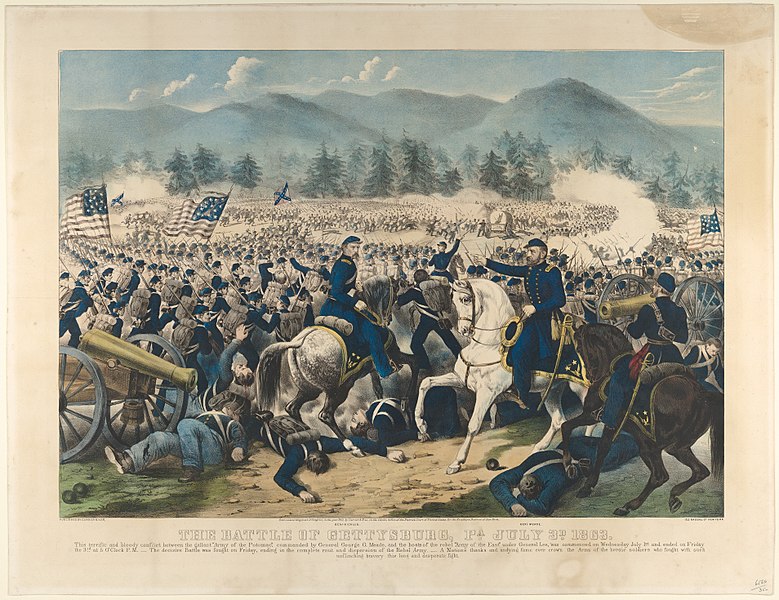
The Battle of Gettysburg was significant for several reasons. It marked a major turning point in the Civil War, as it was the first major victory for the Union army after a series of defeats. The battle also helped to raise morale in the North and contributed to the eventual defeat of the Confederacy.
New York Draft Riots (1863)
The New York Draft Riots were a series of violent disturbances that occurred in New York City in July 1863 during the American Civil War. The riots were sparked by anger and resentment over the newly implemented military draft, which disproportionately affected poor and working-class residents of the city.
The New York Draft Riots were significant for several reasons. They were the largest civil uprising in American history up to that point, and they were fueled by deep-seated social, economic, and racial tensions that had been building in the city for years.
The riots also had important social and cultural implications, as they highlighted the ongoing struggle for social justice and equality in American society.
Assassination of President Abraham Lincoln (1865)
The assassination of President Abraham Lincoln was a tragic event that occurred on April 14, 1865, just days after the end of the American Civil War.
Lincoln was shot by John Wilkes Booth, a Confederate sympathizer and actor, while attending a play at Ford’s Theatre in Washington, D.C. Lincoln died the following day, making him the first president to be assassinated in American history.
The assassination of President Lincoln was significant for several reasons. It shocked the nation and sent the country into a period of mourning and uncertainty. The assassination also had important political implications, as it led to the presidency of Andrew Johnson and contributed to the ongoing struggle for Reconstruction and the establishment of civil rights for African Americans.
Reconstruction Era (1865-1877)
The Reconstruction Era was a period in American history that began after the American Civil War and lasted from 1865 to 1877. The era was marked by significant political, social, and economic changes as the country attempted to rebuild and reunify after the war.
During the Reconstruction Era, the federal government attempted to rebuild the South and establish civil rights for African Americans.
The era saw the passage of several important constitutional amendments, including the Thirteenth Amendment, which abolished slavery, and the Fourteenth and Fifteenth Amendments, which granted citizenship and voting rights to African Americans.
Transcontinental Railroad completed (1869)
The completion of the Transcontinental Railroad in 1869 was a major milestone in American history. The railroad connected the eastern and western coasts of the United States for the first time, spanning a distance of over 1,800 miles and cutting travel time from months to days.
The Transcontinental Railroad was significant for several reasons. It helped to spur economic growth and development across the country, as it made transportation of goods faster, easier, and more affordable.
The railroad also had important social and cultural implications, as it challenged traditional notions of space and time and helped to establish the idea of a national community.
Fifteenth Amendment to the U.S. Constitution ratified (1870)
The Fifteenth Amendment to the United States Constitution was ratified in 1870 and granted African American men the right to vote.
The amendment states that “the right of citizens of the United States to vote shall not be denied or abridged by the United States or by any state on account of race, color, or previous condition of servitude.”
The Fifteenth Amendment was significant for several reasons. It helped to establish the idea of universal suffrage and challenged traditional notions of gender and racial roles in American society. The amendment also had important political implications, as it helped to expand the electorate and contributed to the ongoing struggle for civil rights and social justice in American society.
Ku Klux Klan founded (1865-1870)
The Ku Klux Klan was founded in the years following the American Civil War, from 1865 to 1870. The organization was a white supremacist group that sought to maintain white supremacy and intimidate African Americans, particularly in the southern states of the United States.
The Ku Klux Klan was significant for several reasons. It represented a reactionary response to the social, political, and economic changes of the Reconstruction Era, and it sought to undermine the gains made by African Americans during this time.
The group also had important social and cultural implications, as it challenged traditional notions of race and gender roles in American society.
Battle of Little Bighorn (1876)
The Battle of Little Bighorn, also known as Custer’s Last Stand, was a conflict that took place on June 25-26, 1876, between the United States Army and a coalition of Native American tribes, including the Sioux and Cheyenne, in what is now Montana.
The Battle of Little Bighorn was significant for several reasons. It was a major defeat for the United States Army and represented a significant setback in the government’s attempts to force Native American tribes onto reservations.
The battle also had important social and cultural implications, as it challenged traditional notions of American military prowess and helped to establish the idea of Native American resistance as a central theme in American history.
Chinese Exclusion Act (1882)
The Chinese Exclusion Act was a United States federal law passed in 1882 that prohibited Chinese immigrants from coming to the United States and prevented Chinese immigrants already in the country from becoming citizens. The law was the first federal law in American history to restrict immigration based on race and nationality.
The Chinese Exclusion Act was significant for several reasons. It represented a major departure from the United States’ traditional policy of welcoming immigrants from around the world, and it contributed to the growing sense of nativism and xenophobia in American society.
The law also had important social and cultural implications, as it challenged traditional notions of American identity and helped to establish the idea of racial superiority.
Statue of Liberty dedicated (1886)
The Statue of Liberty was dedicated on October 28, 1886, as a gift from the people of France to the United States in celebration of American independence and democracy. The statue is a symbol of freedom and democracy, and it stands as one of the most recognizable landmarks in the United States.
The Statue of Liberty was significant for several reasons. It represented the close friendship and shared values between the United States and France, and it helped to establish the idea of freedom and democracy as central to American identity.
Haymarket Riot (1886)
The Haymarket Riot was a labor protest that took place on May 4, 1886, in Chicago, Illinois. The protest began as a peaceful demonstration for an eight-hour workday, but it turned violent when a bomb was thrown at the police, killing several officers and protesters.
The Haymarket Riot was significant for several reasons. It represented a major setback for the labor movement and contributed to the growing sense of fear and hostility towards organized labor in American society.
The riot also had important social and cultural implications, as it challenged traditional notions of class and power in American society.
Dawes Act (1887)
The Dawes Act, also known as the General Allotment Act of 1887, was a United States federal law that aimed to assimilate Native Americans into mainstream American culture by breaking up their communal landholdings and distributing individual plots of land to Native American families.
The law also encouraged Native Americans to adopt Western farming practices and abandon their traditional ways of life.
The Dawes Act was significant for several reasons. It represented a major departure from previous federal policy towards Native Americans, which had largely been focused on forced removal and reservation confinement.
The law also had important social and cultural implications, as it challenged traditional notions of communal land use and property ownership in Native American society.
Homestead Strike (1892)
The Homestead Strike was a labor conflict that took place in Homestead, Pennsylvania, in 1892. The strike was sparked by a dispute between the Amalgamated Association of Iron and Steel Workers and the Carnegie Steel Company over wages and working conditions.
The Homestead Strike was significant for several reasons. It represented a major setback for the labor movement and contributed to the growing sense of fear and hostility towards organized labor in American society.
Plessy v. Ferguson Supreme Court decision (1896)
Plessy v. Ferguson was a United States Supreme Court decision in 1896 that upheld racial segregation in public facilities under the “separate but equal” doctrine. The case involved Homer Plessy, an African American man who was arrested for refusing to leave a “whites-only” train car in Louisiana.
The Plessy v. Ferguson decision was significant for several reasons. It established the legal precedent for segregation in public facilities and helped to institutionalize the system of racial segregation known as Jim Crow.
Klondike Gold Rush (1896-1899)
The Klondike Gold Rush was a migration of tens of thousands of people to the Klondike region of the Yukon in northwestern Canada between 1896 and 1899, following the discovery of gold in the area. The gold rush attracted people from all over the world, including the United States, Canada, Europe, and Asia.
The Klondike Gold Rush was significant for several reasons. It represented a major economic boom for the region and contributed to the development of infrastructure and transportation systems in the area.
Spanish-American War (1898)
The Spanish-American War was a conflict between the United States and Spain in 1898, fought primarily in the Caribbean and the Pacific. The war was sparked by the sinking of the USS Maine in Havana harbor and was fought over American interests in Cuba and the Philippines.
Also Read: Facts About the Spanish-American War
The Spanish-American War marked a turning point in American foreign policy and helped to establish the United States as a global power.
U.S. annexes Hawaii (1898)
In 1898, the United States annexed Hawaii, which had previously been an independent kingdom. The annexation followed a series of political and economic events, including the overthrow of the Hawaiian monarchy in 1893 and the subsequent establishment of a provisional government with strong ties to the United States.
The annexation of Hawaii was significant for several reasons. It marked a major expansion of American territory and helped to establish the United States as a global power.
Open Door Policy announced (1899)
The Open Door Policy was a diplomatic initiative announced by the United States in 1899, which aimed to ensure equal trading rights and access to China’s market for all nations.
The policy was designed to counter the spheres of influence established by the European powers in China, and to promote American economic interests in the region.
The Open Door Policy was significant for several reasons. It represented a major shift in American foreign policy towards Asia, and helped to establish the United States as a major player in the region.
Women’s Suffrage Movement (1800s-1920)
The Women’s Suffrage Movement was a social and political movement that began in the 1800s and continued into the early 1900s, with the goal of gaining voting rights for women.
The movement was characterized by a series of protests, demonstrations, and political lobbying efforts, and was led by a number of prominent women’s rights activists.
The Women’s Suffrage Movement was significant for several reasons. It challenged traditional notions of gender and power in American society, and helped to establish the idea of gender equality as central to American democracy.
The movement also had important social and cultural implications, as it raised awareness of the deep-seated social and economic disparities that existed between men and women in American society.
Underground Railroad (1800s)
The Underground Railroad was a network of secret routes and safe houses used by enslaved African Americans in the 1800s to escape from slavery in the Southern United States and to reach freedom in the North or in Canada.
The network was composed of a loose coalition of abolitionists, sympathetic white Americans, and free African Americans who were dedicated to helping slaves escape.
The Underground Railroad was significant for several reasons. It represented a major challenge to the institution of slavery and helped to establish the idea of freedom and equality as central to American democracy. The network also had important social and cultural implications, as it challenged traditional notions of race and power in American society.
Industrial Revolution in America (late 1700s to early 1900s)
The Industrial Revolution in America was a period of rapid industrialization and technological advancement that began in the late 1700s and continued into the early 1900s.
The period was marked by a series of innovations and advancements in manufacturing, transportation, communication, and other industries, which had profound social and economic implications.
The Industrial Revolution in America was significant for several reasons. It transformed the American economy from an agrarian-based society to an industrial-based one, and it helped to establish the United States as a major player in the global economy.
American Civil Rights Movement (1800s-1900s)
The American Civil Rights Movement was a social and political movement in the United States that sought to secure legal and constitutional rights for African Americans and other marginalized groups.
The movement began in the 1800s and continued through the 1900s, and was characterized by a series of protests, demonstrations, and legal battles, as well as the leadership of prominent civil rights activists.
The American Civil Rights Movement was significant for several reasons. It challenged the entrenched social and political systems of segregation and discrimination in the United States, and helped to establish the idea of equal rights and protections under the law for all Americans.
The movement also had important social and cultural implications, as it raised awareness of the deep-seated social and economic disparities that existed between different racial and ethnic groups in American society.
Boxer Rebellion (1900)
The Boxer Rebellion was a violent anti-foreign and anti-Christian uprising in China in 1900, led by a secret society called the Boxers.
The rebellion was a response to a series of political and economic events, including the spread of Christianity and foreign influence in China, and it was characterized by a series of attacks against foreigners and Christians, as well as Chinese Christians who were seen as collaborators with foreign powers.
The Boxer Rebellion was significant for several reasons. It represented a major challenge to the idea of global trade and commerce, and it helped to establish the idea of national sovereignty and independence as central to Chinese identity.
Theodore Roosevelt becomes U.S. President (1901)
Theodore Roosevelt became the 26th President of the United States in 1901, after the assassination of President William McKinley.
Roosevelt was a dynamic and charismatic leader who sought to establish the United States as a major player on the world stage, and he initiated a series of progressive reforms aimed at promoting social and economic justice.
As President, Roosevelt was significant for several reasons. He helped to establish the United States as a global superpower, and he played a key role in negotiating the end of the Russo-Japanese War, for which he was awarded the Nobel Peace Prize.
He also initiated a number of progressive reforms, including the Pure Food and Drug Act and the Meat Inspection Act, which helped to establish the modern regulatory state in the United States.
